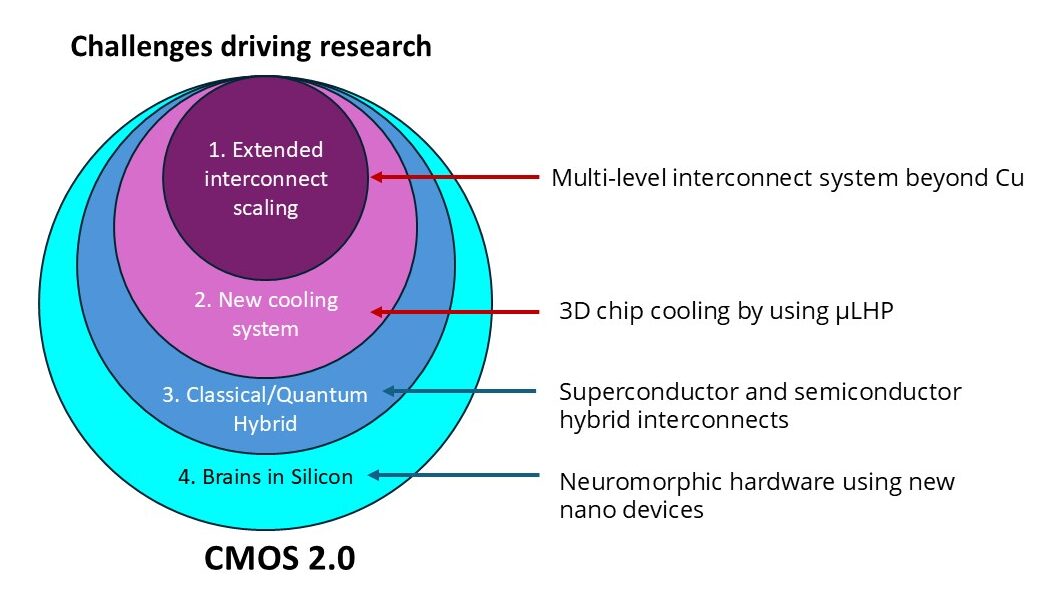Heterogeneous Integrated systems
Let’s create the best design and function for integrated systems together


research activity-1
Multi-level Interconnect System
By combining the multi-level interconnects and on-chip nanodevices, we can realize the energy-efficient monolithic computing system. For the scaled CMOS BEOL(back-end-of-the-line) technology, the resistance increment of Cu interconnects is a real bottleneck for enhansing the system performtance by scaling. In this lab, we are forcusing on alternative materials to replace the Cu. Also, we research and develop new nanodevices integrated on the BEOL.
research activity-2
Brains in Silicon
Neuromorphic computing is a branch of computing that draws inspiration from the architecture and functioning of the human brain. The term “neuromorphic” is derived from “neuro” (related to neurons) and “morphic” (related to form or structure). The goal of neuromorphic computing is to design and build computer systems, aiming to achieve more efficient and brain-like computation. In this lab, we are focusing on the neuromorphic hardware by using eletrochemical resistive change device (e.g. NanoBridge).
research activity-3
3D-stacked Chips Cooling system
A new advanced chip cooling sysmte is under development in TADA Lab. Active cooling functions are designed inside of silicon chips. The 3D-stacking of high-performance computing (HPC) chips will be realized by using original micro-cooling syste soon!
research activity-4
Quantum/Classical Hybrid System
Quantum computers using qubits, which is simultaneously in two states e.g. |0› and |1›, can execute certain algorithms faster than the classical computing. A superconducting transmon like an artificial atom is one of the practical candidates for quantum computing system since the state of the transmon is manipulated by radio frequency (RF) pulses. To minimize the impact of thermal noise on the state, the transoms are placed at a few mK stage in a dilution refrigerator and are controlled. To scale up the numbers of qubits, cryogenic electronics based on complementary metal-oxide-semiconductor (CMOS) technology is considered to be one of the candidates to overcome the bottleneck.